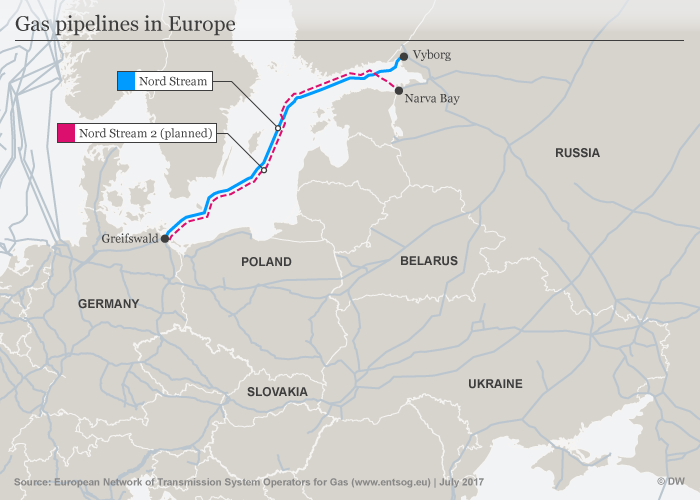Russian gas will be piped direct to Germany from November despite the project's detractors, a project engineer has asserted. Critics have said Europe will be left vulnerable and climate goals will be undermined.

Russia's second natural gas pipeline across the Baltic seabed to Germany is just months away from completion, despite warnings from the US, Ukraine, Poland and Lithuania and the EU commission over Europe's energy security.Recently:
Klaus Haussmann, engineer at Nord Stream 2's future landfall site at Lubmin on Germany's Baltic Sea coast told German public radio station Deutschlandfunk that the "raw" laying of the pipeline would be finished by the middle of 2019.
"Then comes the entire installation of the electrical equipment, security chains. And, then it's planned on the large scale that we get the first conduit filled with gas in November, from Russia," said Haussmann.
Nord Stream 2 — in fact two welded conduits, each with an inside diameter of 1.2 meters (4 feet) and largely following the route of Nord Stream 1 (operational since 2011) — will pipe gas - sourced in northwest Siberia - from its Leningrad region, tracking 1230 kilometers (764 miles) across the Baltic seabed, through Finnish, Swedish and Danish maritime waters, to northeastern Germany.
Along its trajectory, environmentalists including Friends of the Earth claim that seabed wildlife will be "irreparably damaged."
Just before Christmas, Nord Stream said 370 kilometers of pipeline had already been laid and special construction ships and their crews were "proceeding according to plan and on schedule" into Swedish waters.
Rough Baltic weather
Haussmann told DLF his concern was more the impact of the Baltic's winter weather and waves on construction at sea and less so the international pros and cons.
"For two years or more, Nord Stream 2 has been pretty much under fire. But at the moment we have more worries with the weather outside," he said....MUCH MORE
Natural Gas: Poland Is Already Expanding Its New LNG Terminal As Nord Stream 2 Heads For Germany
Natural Gas: "Chancellor Angela Merkel has offered government support to efforts to open up Germany to U.S.."
...As the kids say: Find someone to look at you the way Putin looks at Gerhard Schröder.




